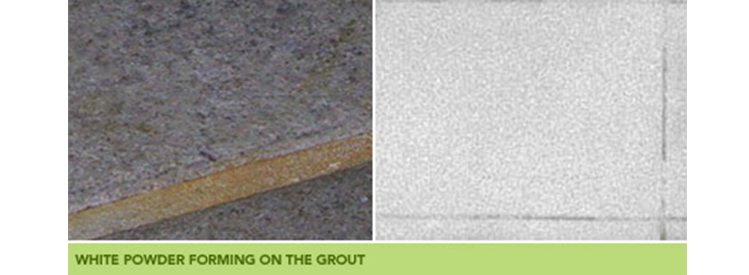
Under certain circumstances, a white powder can form on grout, especially on floor tiles. This is a natural phenomenon called efflorescence. It is due to soluble salts rising to the surface of a cement based product. When they dry out on the surface, the remaining salts appear white and powdery.
Efflorescence often manifests itself in the cement joints of new brickwork. Numerous studies have been made around the world to try to determine why it can appear on one installation, and not on another under apparently identical conditions. One of the few things we do know are that it happens when Portland Cement is present, and that there is no real solution for it. Efflorescence does clear up over time unless there is an ongoing issue with rising damp from the substrate. It is defined as the 'migration of soluble salts.'
This is not due to substandard tiles, adhesives, or grout; and generally, there is nothing to worry about.
As explained, is it simply soluble salts that are present in the cement based product. This can be the concrete, mortar bed, tile adhesive, or grout.
These rise to the the surface, and as it dries an annoying white powder remains on the surface. The grout is the weakest link in the floor surface, so this is where the salts will migrate.
The only real solution is to brush the grout with a stiff bristled brush and vacuum away. Repeat this from time to time, and eventually, it will generally stop recurring. You can also wash the area with a 50/50 mix of water and Phosphoric acid. Apply, leave for two minutes and then rinse thoroughly.
Some people advocate brushing the salts away and then applying a grout sealer. While these are great products and are worth using in many situations to keep your grout clean and seal out dirt, these products won't always stop efflorescence.